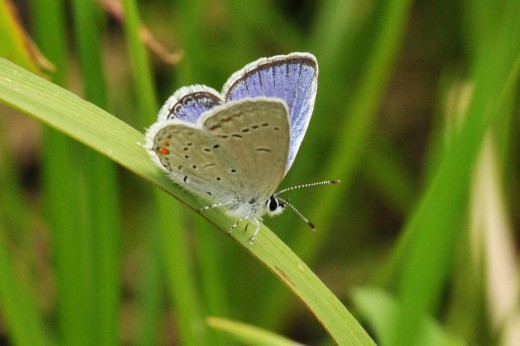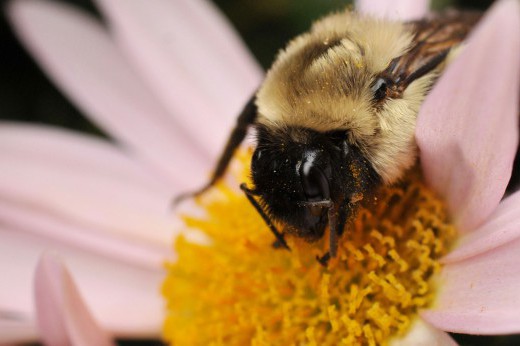Most of us use the term “bug” in a very broad sense—any creature that’s small and has more than four legs, perhaps, and is hard to relate to as a human. But to entomologists, true bugs fall into a very specific group that does not include many familiar insects like ants, beetles, or flies (not to mention spiders, which aren't insects at all). Yet true bugs have many characteristics in common with these other critters, like multiple, jointed legs; numerous eyes, many of them compound; antennae; and exoskeletons. So what distinguishes true bugs?
The true bugs make up the order Hemiptera, members of which which started to appear in the fossil record around 300 million years ago. Like those of distant cousins the Diptera and Lepidoptera, the name Hemiptera refers to the structure of the wings, which in this group are usually only somewhat winglike. A more distinctive but harder-to-see characteristic is their specialized mouthparts, called a stylet, which allows them to pierce tissues. The stylet is morphologically different from the functionally similar proboscis of a butterfly or mosquito.
Most hemipterans use this stylet to feed on plants, like these goldenrod aphids (Uroleucon species) I found in the Native Flora Garden. Some kinds of true bugs have muscles to first pump in digestive enzymes and then suck back up the fluids. Aphids, however, feed passively. See how each tiny nymph and adult is facing downward? They’ve tapped into the phloem of the goldenrod, and the pressure of the plant’s vascular system forces out the sap. Aphids are thought of as pests, but like any organism, they fill a role in the natural ecosystem. Like many aphid species, these goldenrod aphids will feed on only one kind of plant, and they in turn are food for insectivores.
True bugs are hemimetabolous, just like mantises. You can see how this large milkweed bug (Oncopeltus fasciatus) looks pretty much like the nymphs on the left. Unlike holometabolous insects like beetles and butterflies, they do not have a larval stage. These milkweed bugs have warning, or aposematic, coloration: Their diet of toxic milkweed sap makes them unpalatable to predators, who quickly learn to avoid eating them. Look for milkweed bugs in late summer and early fall on their host plants in the Native Flora Garden.
Some of the most striking bugs can be hard to spot, though. This tiny two-spotted treehopper (Enchenopa on-cercis) looked like a thorn, but I realized that cow parsnip doesn’t have thorns and moved in for a closer look.
Stink bugs are among the most common true bugs you’ll encounter. They get their name from the foul-smelling chemicals they secrete when roughly handled or injured. The nonnative brown marmorated stink bug (Halyomorpha halys) showed up recently in the United States and has become an agricultural pest.
Hemipterans come in a wide variety of forms, corresponding to diverse lifestyles. This backswimmer (Notonecta species) was plucked out of the pond in the Native Flora Garden during routine cleaning. Normally, it would be upside down, under the water, with a bubble of air trapped against its body. Backswimmers are predacious, using their stylet to pierce aquatic larvae.
Lastly, here is one of the most well known true bugs, or rather, its exuvium—what’s left after the bug has molted. Cicadas are the sound of summer evenings. The males produce an extraordinarily loud call by rapidly contracting a membrane, called the tymbal, on their abdomen. Hollow spaces in their body amplify the sound dramatically. Most of this year’s cicada brood emerged around here in late August. You can still hear some stray cicada calls and find their hollow exuviums clinging to tree bark in September.



